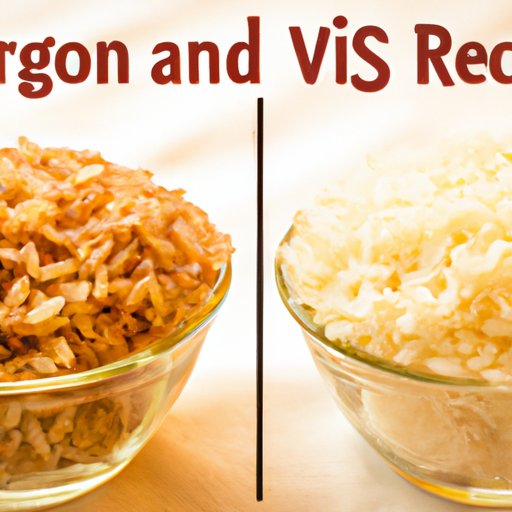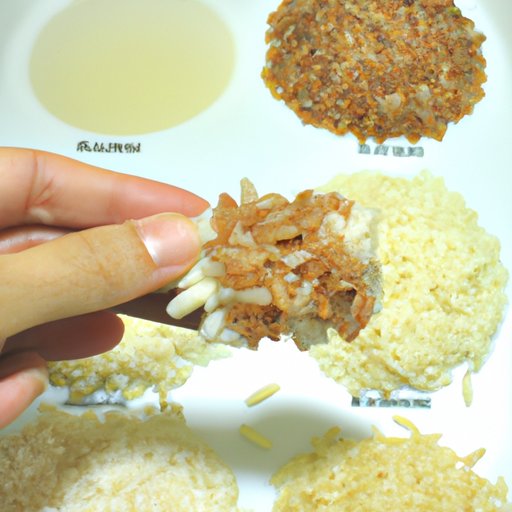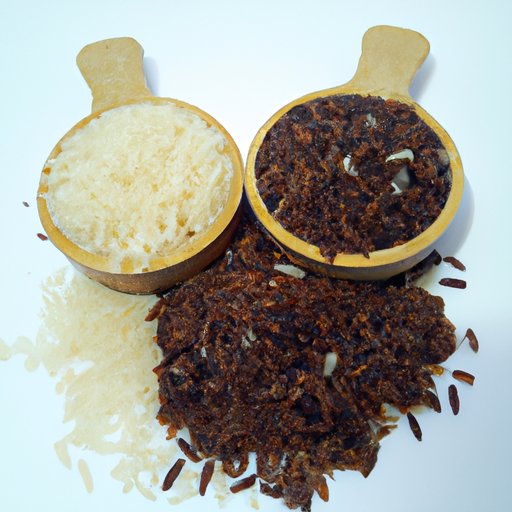Introduction
The debate between brown and white rice has been going on for years. For some, brown rice is seen as the healthier alternative, while others prefer the taste and texture of white rice. But which is really better for you? In this article, we will explore the nutritional benefits of both types of rice and investigate whether or not switching to brown rice is really worth it.

A Comparison of the Nutritional Benefits of Brown Rice vs White Rice
Brown rice is considered to be a whole grain because it still contains the bran, germ, and endosperm, whereas white rice has had the bran and germ removed. This means that brown rice is higher in nutrient content than white rice. A one-cup serving of cooked brown rice contains about 216 calories, 45 grams of carbohydrates, 5 grams of protein, and 3 grams of fiber. It is also rich in vitamins and minerals such as thiamin, niacin, magnesium, iron, zinc, and vitamin B6, as well as antioxidants such as lignans and phenolic compounds.
In comparison, a one-cup serving of cooked white rice contains about 205 calories, 45 grams of carbohydrates, 4 grams of protein, and almost no fiber. Since the bran and germ have been removed during processing, white rice is much lower in vitamins, minerals, and antioxidants.

Exploring the Health Advantages of Switching from White to Brown Rice
One of the biggest advantages of switching to brown rice is its lower glycemic index. The glycemic index (GI) is a measure of how quickly carbohydrates are broken down into glucose and absorbed into the bloodstream. Foods with a high GI are broken down quickly, causing a rapid rise in blood sugar levels. On the other hand, foods with a low GI are broken down more slowly, resulting in a slower and steadier release of energy. Brown rice has a GI of 55, whereas white rice has a GI of 64.
Another advantage of eating brown rice is its potential to reduce the risk of diabetes. A study published in the Journal of Nutrition found that consuming whole grains such as brown rice was associated with a reduced risk of type 2 diabetes. This is likely due to the fact that whole grains are higher in fiber and have a lower glycemic index than refined grains like white rice.
Finally, brown rice may also improve digestion. Since it is higher in fiber than white rice, it helps to keep the digestive system running smoothly and can prevent constipation. Fiber also helps to promote healthy gut bacteria, which are essential for overall health and well-being.
How Brown Rice Can Help You Achieve a Healthier Diet
In addition to its potential health benefits, brown rice can also help you achieve a healthier diet. One cup of cooked brown rice contains only 1 gram of fat and fewer calories than white rice. It is also higher in antioxidants, which can help protect against cell damage and reduce inflammation.
An Overview of the Pros and Cons of Eating Brown Rice
There are several pros and cons to consider when deciding whether or not to switch from white to brown rice.
Pros:
- Nutrient-dense
- Low glycemic index
- Reduced risk of diabetes
- Improved digestion
- Lower fat content
- Higher levels of antioxidants
Cons:
- Longer cooking time
- More expensive
Is Brown Rice Really Better for You Than White?
Overall, the evidence suggests that brown rice is indeed healthier than white rice. It is higher in nutrients, vitamins, minerals, and fiber, and it has a lower glycemic index. It also has the potential to reduce the risk of diabetes and improve digestion. However, it is important to note that brown rice does take longer to cook and is typically more expensive than white rice.

Discovering the Health Benefits of Brown Rice Over White Rice
If you are looking to make dietary changes to improve your health, switching from white to brown rice is a great place to start. Here are some tips to help you make the switch:
- Start by replacing half of your white rice with brown rice. Once you get used to the taste and texture, you can gradually increase the amount of brown rice you eat.
- Experiment with different types of brown rice. There are many varieties available, including short-grain, long-grain, basmati, and wild rice.
- Try adding spices or herbs to your brown rice to give it more flavor. You can also use it as an ingredient in other dishes such as stir-fries, soups, and casseroles.
Conclusion
In conclusion, switching from white to brown rice can provide numerous health benefits. It is higher in nutrients, vitamins, minerals, and fiber, and it has a lower glycemic index. It also has the potential to reduce the risk of diabetes and improve digestion. Although it takes longer to cook and is more expensive than white rice, the health benefits are well worth the effort. By making small dietary changes, such as incorporating brown rice into your meals, you can take steps towards achieving a healthier lifestyle.
(Note: Is this article not meeting your expectations? Do you have knowledge or insights to share? Unlock new opportunities and expand your reach by joining our authors team. Click Registration to join us and share your expertise with our readers.)
